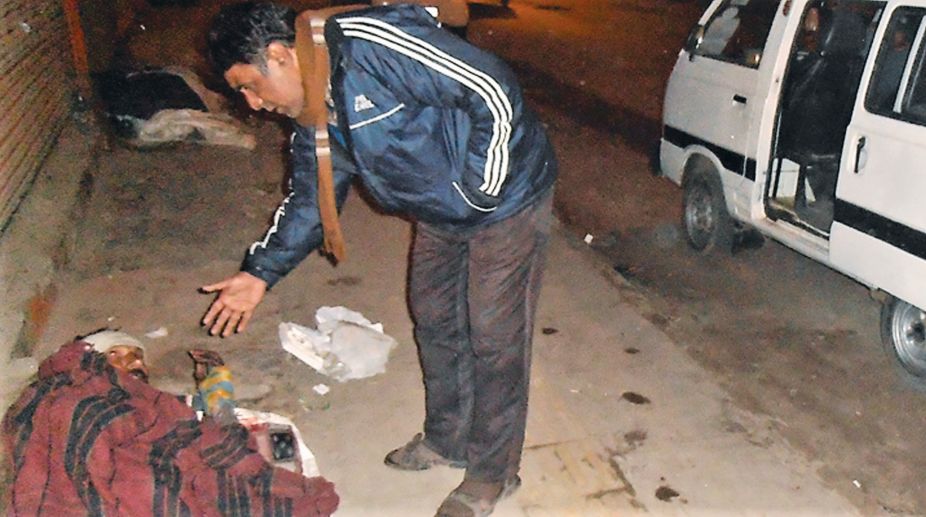Drunk riders fall off flyover in Delhi
A tragic accident occurred on Geeta Colony flyover, resulting in one fatality and another person sustaining serious injuries, police said on Sunday.

homeless
Whenever the air pollution situation becomes serious, people are advised to stay indoors as much as possible. But what about the people who have no ‘indoors’ to stay – people who are homeless? They really have no alternative but to face the brunt of pollution. During the daytime, many of them have to work outdoors. During the night those who cannot access night shelters have to sleep outside, no matter how polluted the air is and how cold the weather is.
While there has been a significant improvement in access to night shelters for homeless people in Delhi and a few other cities, overall in the country only a minority of the homeless can access night shelters. In fact even in the cities best served by night shelters, not all homeless people are protected from weather extremes and pollution. One reason is that several homeless families need to live together; they cannot be segregated into male and female shelters.
Advertisement
Another reason is that some groups of homeless tend to live together on their own due to community ties. Some homeless people who pull rickshaws or handcarts want to remain near these livelihood-earning assets at night. At places there are no shelters for women. Clearly it is not possible for many people to access night shelters.
Advertisement
Hence just a night shelter-based approach is not adequate to cover all homeless people. Other more flexible and innovative approaches have to be used to provide protection to those homeless people who cannot avail of night shelters, but such efforts are seen very rarely in our cities.
Even if we take a conservative view that about one per cent of the urban population in India is homeless, this still gives us an estimate of around 4 million homeless people which is much more than the combined capacity of all night shelters in the country. But the reality is that the number of homeless people is likely to be much higher.
This is particularly so if we also include a category of very precariously housed people. For example, a person may have a hut, but it is so overcrowded that the person has to sleep outside. Then there are those people whose huts or houses have been demolished and they live in makeshift dwellings with hardly any protection from weather extremes. Then there are people who have been pushed to the outer parts of the city by resettlement schemes but as employment is closer to their earlier living space, they try to live close to their place of work in some precarious arrangement.
The census operations find it difficult to cover homeless people in any case and it is even more unlikely that they will care to cover the less clear cases of homelessness. Census data collectors even lack the means to do so.
Most of the homeless people suffer from serious health problems, under-nutrition, malnutrition and weakness to begin with, and so are very vulnerable to the accentuation of their health problems in pollution-crisis situations. Yet it is the homeless who are the worst covered by health services of most cities.
Paramjit Kaur, director of Ashray Adhikar Abhiyan, an organization working with homeless people says, “Innovative health programmes aimed more specifically at meeting the needs of homeless people are urgently needed and these need to be stepped up at the time of pollution-crisis situations.” Having been involved with one such innovative effort in Delhi’s Jama Masjid area for several years, she says that once the needs of homeless people are understood on the basis of experience, even a relatively low budget programme can make an important contribution in terms of reducing the distress of people.
Efforts such as providing simple but hot and nutritious food in shelters are useful for improving the health of homeless people. Some good efforts in this direction in Delhi could be helpful for other state governments that want to step up such work in their cities. In some cities the homeless people find it difficult to access government hospitals so special cards can be provided to them to ensure such access.
Another aspect of pollution which affects homeless people is the temporary ban on certain types of economic activities. For example, a ban on construction activities would deprive a large number of homeless persons from work. In such situations, there may be a special need for providing free or subsidised food at night shelters where inmates may be affected by such forced unemployment.
In cities where construction of proper night shelters may take some time and may not be possible this winter, temporary solutions such as utilising public places at night as shelters for some time could provide immediate relief to some extent to the homeless.
Advertisement